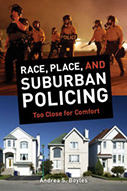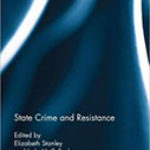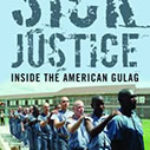Race, Place, and Suburban Policing: Too Close for Comfort

Author: Andrea S. Boyles
Publisher: Oakland, CA: University of California Press, 2015. 268p.
Reviewer: Jonathon A. Cooper | May 2016
Andrea Boyles’s Race, Place, and Suburban Policing covers a perennial topic in policing, namely, the relationship between the police and black communities. Importantly, Boyles discusses the interactions between police and blacks not only in terms of criminal and police activity, but also in terms of spatiality and territoriality. This discussion is not novel, but Boyles brings two fresh perspectives to the table of policing literature. First, her focus is on suburbia rather than the more traditional policing milieu of cities. Second, she expands the conversation from the police to the body politic as a whole. This latter novelty is arguably the most important addition Boyles makes to the policing literature, and I will comment on it in more detail below.
The theoretical premise of Race, Place, and Suburban Policing can be summed up in terms of the interrelationship of police, race, and place. More specifically, Boyles maintains that to understand policing in suburbia, it is necessary to fully consider the role of the suburb’s racial makeup, the history, location, economy, inter alia of the suburb, and the nature and behavior patterns of the police within that community. She illustrates the interplay among these three domains throughout the book, with observations and research conducted in the city of Kirkwood (and more particularly the neighborhood known as Meacham Park), a St. Louis (MO) suburb known most recently for two tragic shootings (which Boyles treats in depth in chapter 4).
In addition to an introduction, there are six chapters. Chapter 1 is a historical overview of the connections among the creation of American police, slavery, and segregation. It includes a helpful outline of the migration of blacks from the rural south into cities and then into suburbia. The author concludes by drawing a line from these past connections to present day concerns regarding police and black civilians, including issues surrounding racial profiling and the attitude of minorities toward the police. Chapter 2 provides a sketch of Kirkwood and Meacham Park, including problems with the police. It is rich in pictures, ethnographic observations, and comments from interviewees. This sketch is extended in Chapter 3 with a detailed discussion of the problem of crime in Meacham Park, problems with police contacts, and the negative attitude about the police that develops among black citizens because of these contacts. Chapter 4 considers the shooting tragedies in Kirkwood of Kevin Johnson and Charles “Cookie” Thornton, and the impact these had on policing behavior in Meacham Park. In many ways, these shooting events can be understood as a tipping point – a tipping point that resulted in the United States Department of Justice intervening with a mediation agreement, as described in Chapter 5. As Boyles points out, this mediation agreement was met with doubt and cynicism, and was ultimately concluded with complete impotence.
In each chapter, Boyles astutely (and adroitly) draws lines among race, place, and the police, constantly reinforcing the role that place has in influencing how police (mis)interpret behavior, which leads to negative attitudes among the black population. This is all summarized in Chapter 6, where Boyles also provides important recommendations for moving forward – not only in St. Louis, but nationally. Her recommendations can be grouped into four categories: first, governments (state, county, municipal, etc.) should work towards political sensitivity, i.e., helping non-minorities recognize power and privilege in operation. Second, governments should work towards political inclusion, ensuring through strategic planning, that all voices are meaningfully represented in the political process. Third, governments should spread out political accountability, as it relates to the first two recommendations and beyond, broadly to numerous interested parties. And fourth, police departments should work towards improving relationships with black communities, with courtesy training, attention to diversity, being involved in community programs, and expanding their mandate to be assistance and service oriented.
To a degree, these recommendations are not novel either. Several of them can be found in the final report of the President’s Commission on Law Enforcement and Administration of Justice, published in 1967, and known to almost all chief administrators of police departments and criminal justicians. What does make Boyles’ recommendations unique is a tacit expansion of these concepts from the realm of the police to politics as a whole. This is the most important contribution that she gives to the policing literature specifically, and to the study of society in general — that the “problem” with the relationship between the police and black communities (and by extension other minority communities) goes beyond the police themselves – and beyond minority communities. Rather, this is a societal issue that deserves a deep and broad societal response. This underlying theme alone renders the book worth more than its weight in gold.
Race, Place, and Suburban Policing is a well-written book, grounded in solid social theory and research. Its focus on suburbia adds a relatively fresh dimension to the study of policing in America, which has almost always focused on urban policing (with a significant substrate of rural policing). The book is appropriate for graduate level courses and should be of interest to any serious scholar of the police and society. Finally, although it goes without saying, its thesis and conclusions are timely to policing in America in a way that, like the President’s Crime Commission report in the late 1960’s, will resonate for decades into the future.
Jonathon A. Cooper, PhD. Director, Criminology Advising Center, Indiana University of Pennsylvania, Department of Criminology and Criminal Justice.


